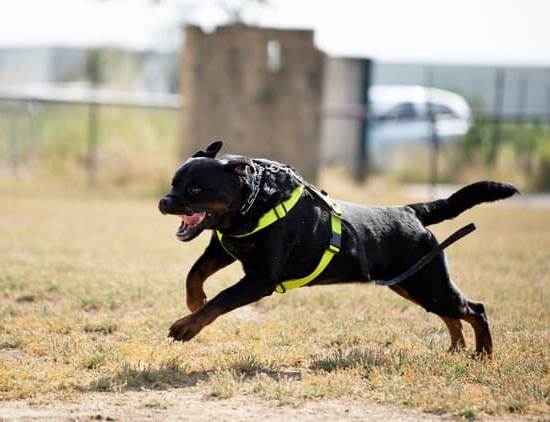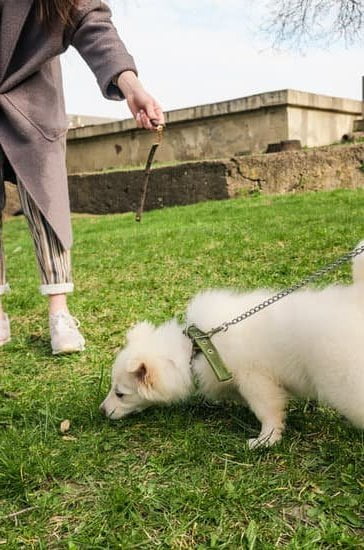Dog training is not just about teaching your furry companion how to sit or stay on command. It goes beyond that to create a strong bond built on effective communication. In this introductory section, we will explore the significance of communication in dog training and how it can pave the way for a successful and fulfilling relationship with your canine companion.
To truly understand your dog and train them effectively, it is crucial to decipher their body language and signals. By learning how to decode canine body language, you can gain insight into what your dog is trying to communicate to you. This understanding will help you respond appropriately and address their needs during training sessions.
Establishing a foundation of effective communication begins by using smart training techniques that have been proven to enhance the human-canine connection. Positive reinforcement plays a vital role in smart training, as it reinforces desired behaviors through rewards rather than punishment. By focusing on rewarding good behavior, you can foster a positive learning environment where your dog feels motivated and eager to learn.
One revolutionary method that has gained popularity in recent years is clicker training. Clicker training uses sound associations to communicate with dogs, helping them understand precisely which behaviors are being rewarded. In this article, we will delve into the step-by-step process of introducing clicker training to your dog and how it can revolutionize the way you communicate during training sessions.
Communication is key when it comes to building trust between you and your dog. By mastering the art of effective communication, you can establish a lifelong bond with your furry friend that extends far beyond verbal commands. Throughout this article, we will explore advanced techniques for teaching complex commands and tricks, as well as troubleshooting common communication challenges that may arise during the training process.
Whether you are a seasoned dog trainer looking for new ways to enhance communication with your four-legged companion or a beginner embarking on the exciting journey of obedience training, this article will provide valuable insights and practical tips for improving your communication skills with your dog. Get ready to unlock a whole new level of understanding and connection as we dive into the world of talking dog training, smart training techniques, and clicker training.
Decoding Canine Body Language
One of the most important aspects of effective dog training is understanding and interpreting canine body language. Dogs communicate primarily through their body posture, facial expressions, and vocalizations, and by learning to read these signals, you can gain invaluable insight into what your dog is trying to tell you. Being able to understand your dog’s body language will not only enhance your communication with them but also help you create a strong bond built on trust and mutual understanding.
When decoding canine body language, it is crucial to pay attention to the whole picture rather than just focusing on isolated body parts or signals. For example, a wagging tail does not always mean that a dog is happy.
It could indicate excitement, fear, or even aggression, depending on the context and accompanying signals from other parts of the body. Additionally, take note of other factors such as ear position, eye contact (or lack thereof), mouth/tongue behavior, overall posture (whether the dog appears relaxed or tense), and any changes in these cues over time.
To better understand what your dog is saying through their body language, familiarize yourself with some common signals. For instance, if your dog’s ears are forward and their tail is up while they have a relaxed mouth and loose wiggly body posture, they are likely showing signs of friendliness or approachability.
On the other hand, if their ears are pinned back against their head while displaying bared teeth and stiff/tense muscles throughout their body, they may be expressing fear or aggression.
By becoming adept at decoding canine body language and recognizing subtle nuances in your dog’s expressions and movements, you will become better equipped to respond appropriately to their needs and emotions. This understanding will allow for clear communication between you and your furry friend during training sessions and everyday interactions leading to a stronger bond between you both. In the next section, we’ll explore how to establish a strong foundation for effective communication with your dog.
How to Establish a Strong Foundation for Effective Dog Communication
Establishing a strong foundation for effective dog communication is crucial when it comes to training your furry friend. Without proper communication, it becomes challenging for both you and your dog to understand each other’s cues and commands. To ensure successful training sessions, follow these steps to establish a solid foundation for effective communication with your dog:
- Build a bond: Before starting any training, it is important to build a strong bond with your dog. Spend quality time together, engage in playtime, and use positive reinforcement techniques to create trust and mutual respect.
- Learn their body language: Understanding canine body language is essential in communicating effectively with dogs. Take the time to learn the various signals that dogs use to express emotions such as fear, happiness, or aggression. This will help you better understand your dog’s needs and feelings throughout the training process.
- Establish clear rules and boundaries: Dogs thrive on structure, so setting clear rules and boundaries in your household is crucial. Consistency is key here – make sure everyone in the family follows the same guidelines so that your dog doesn’t get confused or frustrated.
Additionally, incorporating positive reinforcement techniques can greatly enhance communication with your furry friend during training sessions. Positive reinforcement involves rewarding desired behaviors rather than punishing unwanted ones. Here are some techniques you can use to reinforce positive behavior:
- Use treats: Treats are an excellent motivator for most dogs. When teaching a new command or trick, reward your dog with treats whenever they perform the behavior correctly.
- Praise and affection: Dogs thrive on praise and attention from their owners. Vocal praise, pets, belly rubs, or playtime can all be used as rewards to reinforce positive behavior.
- Clicker training: Clicker training is a method that uses a clicker, a small handheld device that makes a distinct sound when pressed. By pairing the sound of the clicker with treats or rewards, you can effectively communicate to your dog that they have done something correctly. The sound of the clicker becomes a signal for your dog to expect a reward.
By establishing a strong foundation and using positive reinforcement techniques, you will be able to communicate effectively with your dog during training sessions. Remember, patience and consistency are key when it comes to successful communication with your furry friend. With time and practice, you will be able to develop a lifelong bond based on clear and effective communication.
Smart Training Techniques
Positive reinforcement is a highly effective training technique that can greatly enhance communication between dogs and their owners. This method involves rewarding desired behaviors to encourage repetition and increase the likelihood of future success. By focusing on positive reinforcement, dog owners can establish a clear line of communication with their furry friends and create a harmonious training environment.
One key aspect of positive reinforcement is the use of rewards such as treats, praise, and playtime when a dog exhibits a desired behavior. This encourages the dog to associate the behavior with something positive, reinforcing the idea that performing the behavior will result in a reward.
For example, if you are teaching your dog to sit, you can give them a treat every time they successfully sit on command. Over time, the dog will learn that sitting on command leads to a reward and will be more likely to comply.
In addition to rewards, timing is crucial in positive reinforcement training. The reward needs to be given immediately after the desired behavior occurs so that the dog understands what they are being rewarded for. If there is too much delay between the behavior and the reward, it may confuse or frustrate the dog. Consistency is also important in maintaining effective communication through positive reinforcement. It is essential to consistently reward desired behaviors while ignoring or redirecting undesirable ones.
To illustrate the effectiveness of positive reinforcement in enhancing communication with dogs, data from several studies have shown that this training technique leads to higher success rates and faster learning compared to punishment-based methods. One study conducted by researchers at Columbia University found that dogs trained using positive reinforcement were more likely to exhibit desirable behaviors consistently compared to dogs trained using aversive techniques.
Another study published in Applied Animal Behaviour Science showed that dogs trained using positive reinforcement showed fewer signs of fear or anxiety during training sessions.
Overall, incorporating smart training techniques based on positive reinforcement into your dog’s training routine can greatly enhance communication between you and your furry friend. By utilizing rewards, timing, consistency, and scientific evidence, you can establish a strong foundation for effective communication and foster a lifelong bond with your dog.
| Study | Findings |
|---|---|
| Columbia University Study | Dogs trained using positive reinforcement exhibited desirable behaviors more consistently compared to dogs trained using aversive techniques. |
| Applied Animal Behaviour Science Study | Dogs trained using positive reinforcement showed fewer signs of fear or anxiety during training sessions. |
Clicker Training
Clicker training is a revolutionary method of communication that has gained popularity in the world of dog training. With its emphasis on positive reinforcement and clear communication, clicker training offers an effective and rewarding way to teach dogs new behaviors and commands. In this section, we will explore the basics of clicker training and how to introduce it to your dog.
The concept behind clicker training is simple yet powerful. It involves using a small handheld device called a clicker, which makes a distinct clicking sound when pressed. The timing of the click is crucial, as it serves as a marker to let the dog know exactly what behavior is being reinforced. This immediate feedback helps dogs associate the desired behavior with something positive, such as treats or praise.
One of the main benefits of clicker training is its clarity and precision in communication. Unlike verbal cues or gestures, which can be easily misinterpreted by dogs, the click provides a consistent and unambiguous signal that tells them they have done something right. This makes it easier for dogs to understand exactly what behavior is being rewarded, leading to faster learning and better retention of skills.
By incorporating clicker training into your dog’s training routine, you can enhance communication and strengthen your bond with your furry friend. The clear feedback provided by the click helps establish trust between you and your dog, making training sessions enjoyable for both parties involved. Additionally, because it focuses on positive reinforcement rather than punishment or correction, clicker training creates a positive learning environment that encourages dogs to actively engage in the training process.
To introduce clicker training to your dog, it is important to start with some basic exercises. Begin by associating the sound of the click with rewards such as treats or toys. Click and treat several times in quick succession so that your dog starts to understand that the sound means something good is about to happen.
Once your dog has made this association, you can start using the clicker to mark and reinforce desired behaviors. Gradually, you can shape more complex behaviors by breaking them down into smaller, achievable steps.
Step-by-Step Guide
Choosing the Right Clicker
When it comes to clicker training, choosing the right clicker is crucial. A clicker is a small handheld device that makes a distinct clicking sound when pressed. This sound serves as a marker to indicate to your dog that they have performed the desired behavior correctly.
There are various types of clickers available, including traditional box-style clickers and button clickers. The important thing is to choose one that you find comfortable to hold and operate consistently. Additionally, consider the volume of the clicker, as some dogs may be sensitive to loud noises.
Introducing the Clicker
Before you start using the clicker for training purposes, it’s important to associate it with positive experiences in your dog’s mind. Begin by simply clicking the device and immediately following it with a tasty treat or praise. Repeat this several times over multiple sessions until your dog starts associating the sound of the clicker with something positive and rewarding.
Pairing Clicks with Behaviors
Once your dog has made a positive association with the sound of the clicker, you can start using it during training sessions. Begin by pairing each desired behavior with a click followed by an immediate reward.
For example, if you want your dog to sit on command, wait for them to naturally sit down and then quickly click and offer a treat or praise. Repeat this process consistently so that your dog understands that sitting is directly linked to receiving rewards.
Fading Out Treat Rewards
While initially using treats as rewards during clicker training is essential for reinforcing behavior, eventually you’ll want to fade out their use and rely more on verbal praise or other forms of reinforcement. To do this, gradually increase the number of times your dog must perform a behavior before receiving a reward or begin rewarding every other correct response instead of every single one.
This way, your dog will still be motivated to respond to the clicker without becoming solely dependent on treats.
Generalizing Clicker Training
After your dog has mastered certain behaviors using the clicker in a specific environment, it’s important to generalize their training to different locations and situations. Practice the same commands and behaviors in various settings, gradually exposing your dog to distractions and challenging environments. By consistently reinforcing the clicker as a signal for correct behavior, your dog will begin to understand that regardless of the situation, responding appropriately is always rewarded.
Introducing clicker training to your dog can be an effective and rewarding way to communicate with them during training sessions. By choosing the right clicker, introducing it positively, pairing clicks with behaviors, fading out treat rewards, and generalizing the training process, you can establish clear communication and build a strong bond with your furry friend. Remember to be patient and consistent throughout the process as you guide your dog towards becoming a more well-behaved companion.
Advanced Communication Techniques
Teaching dogs complex commands and tricks requires advanced communication techniques. Once you have established a strong foundation for effective dog communication, you can move on to more advanced training. These advanced techniques will not only challenge your dog mentally but also deepen the bond between you and your furry friend.
One important aspect of teaching complex commands and tricks is breaking them down into smaller, achievable steps. Dogs learn best when they are rewarded for small successes along the way.
For example, if you want to teach your dog to jump through a hoop, start by rewarding them for simply walking towards the hoop, then reward them for touching the hoop with their nose, and gradually work up to jumping through it. This incremental approach builds confidence in your dog and makes it easier for them to understand what you are asking of them.
Another advanced technique is using hand signals in combination with verbal cues. Adding visual cues to your commands can help dogs understand what you want from them more easily. For instance, if you want your dog to sit, you can hold your hand up with an open palm while saying the verbal cue “sit.” Eventually, your dog will associate the hand signal with the behavior and respond to it even without the verbal cue.
In addition, incorporating shaping exercises into your training sessions can be highly effective in teaching complex commands and tricks. Shaping is a method where you reinforce behaviors that are incrementally closer to the desired end behavior.
For example, if you want your dog to give a high-five, you would start by rewarding any paw movement towards your hand, then gradually require more contact until they are fully extending their paw for a high-five. Shaping allows dogs to actively participate in problem-solving and encourages them to offer new behaviors.
By utilizing these advanced communication techniques in teaching complex commands and tricks, you will not only challenge your dog’s cognitive abilities but also strengthen the bond between you as their trainer. Remember that patience, consistency, and positive reinforcement are key to successful training. With time and practice, you and your furry friend will be able to accomplish impressive and fun tricks together.
Troubleshooting Communication Issues
Effective communication is paramount in dog training, but it doesn’t always come easy. Just like humans, dogs can experience communication challenges that hinder their ability to understand and respond to commands. In this section, we will explore some of the most common communication issues encountered during dog training and provide practical solutions to overcome them.
- Misinterpretation of Signals: One of the most common challenges in dog training is when a dog misinterprets signals from its owner or trainer. This can result in confusion or even disobedience. To address this issue, consistency is key. Ensure that you use consistent verbal cues, hand signals, and body language for each command or behavior you teach your dog. By using consistent signals, you establish clear expectations and minimize confusion.
- Lack of Focus: Dogs can easily become distracted during training sessions, especially if there are external stimuli or competing rewards present. If your dog struggles with focus, start by creating a quiet and distraction-free environment for training sessions. Gradually introduce distractions as your dog becomes more proficient with basic commands. Additionally, using high-value treats or rewards can help increase focus and motivation during training.
- Reinforcement Timing: The timing of reinforcement plays a crucial role in effective communication with your dog. Delayed reinforcement can lead to confusion as dogs may associate the reward with the wrong behavior or even forget what they did right.
Conversely, premature reinforcement can cause dogs to become reliant on constant treats rather than understanding the desired behavior fully. It is vital to provide immediate positive reinforcement when your dog exhibits the desired behavior so that they clearly understand which action led to the reward.
To troubleshoot these communication issues effectively, it is essential to stay patient and persistent throughout the training process. Each dog is unique, and it may take time for them to fully grasp certain commands or behaviors. By utilizing consistent signals, creating a focused environment, and providing timely reinforcement, you will enhance communication with your dog and achieve better training outcomes.
Communication Beyond Words
Understanding the Power of Non-Verbal Communication
When it comes to communicating with dogs, words are not always enough. Dogs primarily rely on non-verbal cues to understand their surroundings and interact with humans and other animals. Understanding and utilizing non-verbal communication can greatly enhance your ability to connect with your dog and strengthen your training efforts.
Dogs communicate through various body language signals, facial expressions, and postures. By observing and interpreting these cues, you can gain valuable insights into your dog’s emotions, needs, and intentions. For example, a wagging tail is often associated with happiness or excitement, while a lowered head and tense body may indicate fear or anxiety. Learning to read your dog’s gestures accurately will allow you to respond appropriately and adjust your training methods accordingly.
Using Body Language to Communicate with Your Dog
To effectively communicate with your dog using non-verbal methods, it’s essential to be aware of your own body language as well. Dogs are highly perceptive of human emotions and can pick up on subtle changes in our posture, tone of voice, and facial expressions. Maintaining a calm and confident demeanor during training sessions will help create a positive environment for learning.
In addition to being mindful of your own body language, it’s important to use clear signals that are easily understood by your dog. Consistency is key – try using the same hand gestures or visual cues for specific commands or behaviors. This will help your dog associate the correct action with the corresponding signal more quickly.
Supplementing Verbal Commands with Visual Cues
While verbal commands such as “sit” or “stay” are an important part of training, pairing them with visual cues can reinforce understanding for dogs who struggle with auditory processing. For example, when teaching your dog to sit, you can simultaneously hold up a hand signal by raising your palm towards their face.
By consistently pairing the visual cue with the verbal command, your dog will learn to associate the action with the gesture, making it easier for them to respond correctly.
In addition to hand signals, other visual cues such as pointing or using props can also help convey information to your dog. For instance, if you want your dog to fetch a specific toy, pointing in its direction or holding up the toy itself can guide their attention and encourage them to retrieve it.
By exploring non-verbal methods of communication, you can deepen your connection with your dog and improve their training experience. Understanding and utilizing body language signals, maintaining clear and consistent visual cues, and supplementing verbal commands with visual prompts are all effective ways to enhance communication between you and your furry friend. Mastering these techniques will not only improve training outcomes but also foster a stronger bond based on trust and understanding.
Conclusion
In conclusion, mastering dog training communication is crucial for establishing a lifelong bond with your furry friend. Understanding the importance of effective communication in dog training sets the foundation for a successful and enjoyable relationship between you and your dog. By decoding canine body language, you can better understand what your dog is trying to communicate, allowing you to effectively respond to their needs.
Establishing a strong foundation for effective dog communication involves smart training techniques that enhance communication through positive reinforcement. Clicker training, in particular, has proven to be a revolutionary method in dog training communication. Through step-by-step guidance and consistency, clicker training allows you to communicate complex commands and tricks to your dog in a clear and consistent manner.
However, it’s important to recognize that communication issues may arise during the training process. Troubleshooting common challenges and finding appropriate solutions is key in overcoming these obstacles. Additionally, exploring non-verbal methods of communicating with your dog can take your bond to new heights.
By dedicating time and effort into mastering dog training communication, you can create a lifelong bond with your furry friend. Remember that effective communication is not just limited to words – understanding body language and utilizing positive reinforcement techniques are vital components as well. With patience, consistency, and love, you can build a strong relationship based on understanding and trust with your beloved canine companion.
Frequently Asked Questions
How do I introduce my dog to clicker training?
To introduce your dog to clicker training, first try familiarizing them with the sound of the clicker in a calm environment. Click the device and immediately give your dog a treat. Repeat this process several times so they can associate the sound of the clicker with a positive reward.
Once they understand this connection, you can begin incorporating it into training sessions. When teaching a new behavior, use the clicker to mark the exact moment your dog performs the desired action, followed by giving them a treat as a reward. Consistency and repetition will help reinforce this positive association between the clicker, behavior, and reward.
Is it good to use a clicker for dog training?
Yes, using a clicker for dog training has proven to be highly effective and beneficial. The clicker serves as a precise marker signal that bridges the gap between correct behavior and reward delivery.
Dogs are able to quickly understand that when they hear the distinct sound of the clicker, it means they have done something right and will soon receive a treat or praise. This type of positive reinforcement helps dogs learn behaviors more rapidly since they can clearly differentiate which actions bring about rewards from their owner or trainer.
How do you use a dog clicker for bad behavior?
When addressing bad behavior using a dog clicker, timing is crucial. As soon as you catch your dog engaging in an unwanted behavior – such as jumping on furniture or barking excessively – immediately make a loud noise with your clicker to interrupt their actions without startling or scaring them too much. Following this interruption noise, redirect their attention towards an alternative desirable behavior that is incompatible with the undesired one (e.g., if they were chewing on furniture, offer them a chew toy instead).
When they respond correctly by engaging in the alternative behavior, use the clicker again to mark their correct response and follow it up with praise or treats as reinforcement. By consistently reinforcing alternate behaviors with positive rewards while reducing attention towards unwanted behaviors through interrupting clicks, your dog can gradually learn better behavior patterns.

Welcome to the blog! I am a professional dog trainer and have been working with dogs for many years. In this blog, I will be discussing various topics related to dog training, including tips, tricks, and advice. I hope you find this information helpful and informative. Thanks for reading!





